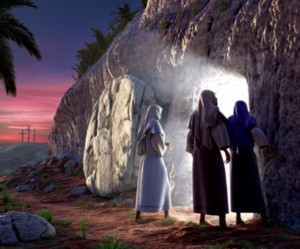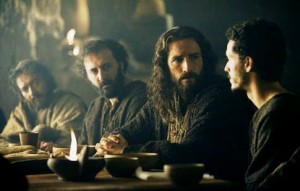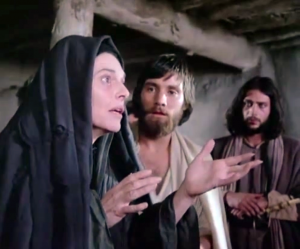It has often been stated that the Christian faith stands or falls on history, that of the historical event of the Resurrection of Jesus of Nazareth. William Lane Craig states, “Without the belief in the resurrection the Christian faith could not have come into being.” [1] N. T. Wright explains further the core belief of the early church, “…the life of early Christianity is inexplicable apart from the assumption that virtually all early Christians…did indeed believe that Jesus of Nazareth had been raised bodily from the dead, but with a transformed embodiment, not simply in a resuscitation to an identical body; and that this event was both the proleptic fulfillment of Israel’s great hope and something for which no one at the time had been prepared. This belief is the reason why early Christianity was, to its core, a ‘resurrection’ movement, with this hope standing at the center, not the periphery, of its vision.” [2]
But one may rightly ask, “what is the basis of this belief”? On what evidence are we making the truth claim that Jesus did indeed rise from the dead?
 Again, Dr. Craig writes, “The origin of Christianity therefore hinges on the belief of the early disciples that God had raised Jesus from the dead.”[3] John, a disciple and follower of Jesus from the beginning of his ministry, gives testimony of being eyewitnesses to Jesus’ life, death and resurrection:
Again, Dr. Craig writes, “The origin of Christianity therefore hinges on the belief of the early disciples that God had raised Jesus from the dead.”[3] John, a disciple and follower of Jesus from the beginning of his ministry, gives testimony of being eyewitnesses to Jesus’ life, death and resurrection:
The writers of the New Testament wrote as eyewitnesses, or from firsthand information, as those who experienced the historical life, death and resurrection of Jesus Christ. Rufus M. Jones, Quaker theologian and philosopher explains the unique perspective and place of an eyewitness—“The apostles were for many reasons pre-eminent in whatever community they found themselves. They spoke with the authority which one who has seen and heard and handled always possesses.” [4]
In the intro of his gospel, Luke clearly states who his sources were:
Peter and John also affirmed the standard of eyewitness testimony:
For we did not follow cleverly devised myths when we made known to you the power and coming of our Lord Jesus Christ, but we were eyewitnesses of his majesty. (2 Peter 1:16 ESV)
He who saw it has borne witness—his testimony is true, and he knows that he is telling the truth—that you also may believe. (John 19:35 ESV)
Regarding the value of the primary source of eyewitness testimony as found in the New Testament, F. F. Bruce writes:
When we consider the context in which the apostles preached and later recorded their eyewitness testimony, we can be assured that their testimony is true, considering the social parameters within which they were working. To repeat what was early stated by F. F. Bruce, “The disciples could not afford to risk inaccuracies (not to speak of willful manipulation of the facts), which would at once be exposed by those who would be only too glad to do so.”
Dynamics of Eyewitness Testimony
Many have highlighted what they see as contradictions or inconsistencies between the New Testament accounts of Jesus’ life, death, and particularly His Resurrection. The motive behind most of these ‘highlights’ and/or accusations is to cast doubt on the character and credibility of the eyewitnesses themselves, and as such, attempt to render their testimony unreliable and untrustworthy. I know of no one who has addressed this issue more comprehensively and convincingly than author, cold-case detective, and adjunct professor of apologetics at Biola University, J. Warner Wallace. (you can visit his web sites, here and here.) In evaluating eyewitness accounts, J. Warner Wallace offers the following instruction:
I already acknowledged two things about witnesses: they seldom agree about every detail and they are sometimes mistaken about some aspect of their testimony. In spite of this, witnesses can be deemed reliable and trusted once we do the hard work of determining why they might see something differently or incorrectly. In fact, judges in the state of California instruct juries that they are not to distrust a witness just because that witness may be wrong about some aspect of his or her testimony:
Witnesses can be wrong in some aspect of their testimony, yet be considered reliable, over all. Once the jury understands why the witness might be mistaken in a detail, they are encouraged to consider the rest of the testimony reliable.[6]
In his article, How Many Women Visited the Tomb of Jesus, Wallace offers the following criteria in establishing the credibility and trustworthiness of eyewitness testimony:
When interviewing multiple eyewitnesses, I listen carefully for common features in their testimony. In every witness observation, some details are more important than others; some aspects of the event stick out in the mind of the observers more than others. In this case, every author is clear about one thing: women (plural) were the first to find the empty tomb. The women who attended to Jesus during his ministry loved Him enough to attend to his body after the crucifixion. According to Mark, they went to the tomb for a purpose: to anoint Jesus with spices. It’s not surprising the women disciples of Jesus would be thoughtful and caring enough to want to do this. Every gospel author agrees; the women came to the tomb and were the first to discover it empty…
Recognize the Perspective of Each Eyewitness
Every witness offers a view of the event from his or her unique perspective. I’m not just talking about geographic or locational perspectives here, but I am also talking about the personal worldview, history and experience every witness brings to the crime. All witness testimony is colored by the personal interests, biases, aspirations, concerns and idiosyncrasies of the eyewitnesses. In this particular case the most glaring exception in the description of the women is from John’s account. John mentions only Mary Magdalene by name. He does, however, tell us this Mary was not alone. When describing her visit to the tomb, Mary later tells Peter, “They have taken away the Lord out of the tomb, and we do not know where they have laid Him.” So even John’s account acknowledges the presence of additional women. The issue here is not that each author describes a different number of women, but that each author chooses to identify different women by name. Why is this the case? Once again, it all comes down to the purpose and individuality of each reporter, and as investigators, we may never know precisely why variations of this nature occurred. But John’s Gospel does seem to give us a clue. John appears to be focused on the first male eyewitnesses of the empty tomb. Unlike other authors, John spends much more time and gives much more detail about how he and Peter discovered the empty tomb. As a result, the women are in a secondary role in John’s narrative. Mary Magdalene is mentioned by name simply because she happened to be the woman who first contacted Peter about the tomb. Even though John acknowledges there were other women involved (as seen in Mary’s use of the plural pronoun, “we”), he doesn’t take the time to describe them. John seems to place higher value in his own eyewitness status than in the eyewitness status of the women. He later reinforces his own pedigree by saying “This [John] is the disciple who is testifying to these things and wrote these things, and we know that his testimony is true” (John 21:24). 
Differentiate Between Complimentary and Conflicting Accounts
When comparing two eyewitness accounts, I am more concerned about unresolvable contradictions than complimentary details. In fact, I have come to expect some degree of resolvable variation in true, reliable eyewitness accounts. When examining the number of women present at the tomb of Jesus, the four accounts could all be seen as accurate representations of what really happened if the group of women included the following people: Mary Magdalene, Mary the mother of Jesus, Mary the Mother of James (and Joseph), Salome, and Joanna. This group would account for the women mentioned by all four authors. All the authors speak of a group and some authors identify specific members of this group based on their personal perspective, purposes and audience.
Assess the Opportunity for Collusion
Whenever I am called to a crime scene as a detective, the first request I make of the dispatcher is to separate the eyewitnesses before I get there. I request this so the witnesses won’t have the opportunity to talk to one another about what they’ve seen. Witnesses will sometimes try to resolve any variations before I get there. I don’t want them to do this; that’s my job, not theirs…There have been times, however, when witnesses have the opportunity to consult with one another for several hours before I arrive on scene. When this is the case, and their individual accounts still vary from one another, I usually have even more confidence in the reliability of these accounts. When people have the opportunity to align their statements, yet still refuse to do so, I know I am getting the nuanced observations I need to properly investigate the case. The Gospel authors (and the early Church) certainly had the opportunity to change the descriptions of the women to make sure they matched, but they refused to do so. As a result, we can have even more confidence in the reliability of these accounts. They display the level of variation I would expect to see if they were true, reliable eyewitness descriptions.
In my experience as a cold case detective, no two eyewitness accounts ever agree on every detail or every emphasis. This doesn’t shake me as an investigator and it’s never inhibited an investigation. It’s just the nature of eyewitness testimony. Related to the number and identity of the women at the tomb of Jesus, the four gospel accounts demonstrate the same variation I’ve seen in my professional work. How many women were at the tomb? Five, most likely. The Gospels are not contradictory in their description of these five women for the reasons I’ve cited. You can trust the reliability of the New Testament eyewitness Gospels.[7]
Professor of New Testament studies, Craig L. Blomberg, concurs with Wallace:
Are the Gospels still reliable if they have errors or inconsistencies?-J. Warner Wallace
Contradictions in the Bible accounts of Jesus rising from the dead?-N. T. Wright, Michael Licona, William Lane Craig and others
Is the Bible full of Contradictions?-Tim Barnett
References
[1] William Lane Craig, Knowing the Truth about the Resurrection, Servant Books, 1988, pg. 116-17
[2] N. T. Wright, The Resurrection of the Son of God, Fortress Press, 2003, pg. 587
[3] Ibid, William Lane Craig
[4] Rufus M. Jones, Studies in Mystical Religion, Macmillan, 1909, pg. 22
[5] F. F. Bruce, The New Testament Documents: Are They Reliable?, InterVarsity Press, 1964, pgs. 33, 44-46
[6] J. Warner Wallace, A Witness Can be Wrong and Reliable, http://coldcasechristianity.com/2013/a-witness-can-be-wrong-and-reliable/
[7] J. Warner Wallace, How Many Women Visited the Tomb of Jesus, http://coldcasechristianity.com/2015/how-many-women-visited-the-tomb-of-jesus/
[8] Craig L. Blomberg, The Historical Reliability of the Gospels, InterVarsity Press, 2007, pgs. 152-53
